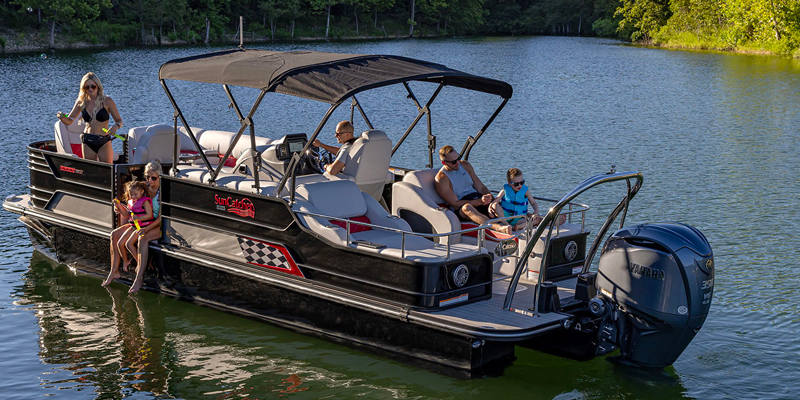As a pontoon owner, knowing what to do in case of an emergency is crucial. One such emergency is running aground, and another is damaging the propeller. Both of these situations are extremely stressful and cause damage to your pontoon boat. Unfortunately, these incidents can happen to even the most experienced boaters, as there can be hidden sandbars, rocks, or debris in the water, especially if you are unfamiliar with the area. The best thing to do in these situations is to stay calm and know what steps to take.
What is running aground, and how can it damage the propeller?
Running aground means that the bottom of your pontoon boat is stuck on the bottom of the river, lake, or ocean. This can happen on purpose when looking to unload or reload cargo, however, it usually happens due to a sudden change in water depth. Running aground at speed can cause significant damage to your boat; therefore, it is important to react calmly if you end up in this situation. Furthermore, running aground and attempting to continue over the obstacle can result in your propeller getting caught and damaged. Below is a simple checklist to help you if you run aground or damage your propeller.
Step 1: Assess the Situation
When you suddenly run aground, the first thing you should do is stop and assess any immediate damage. Check for any injuries on board from the sudden stop, and check that the pontoon boat is not taking on any water, and that the propeller has no damage. If you have any injuries on board or the pontoon boat is taking on water, be sure to use your radio to call for help. Then administer first aid as best you can on board, and ensure everyone is wearing their lifejacket properly.
Consider the situation and weather. Are you in a safe spot, or are there waves that could cause issues? Is the weather changing, and how late in the day is it? These are additional factors that could change the situation, for example, if you are in a tidal area, the rising tide will free the pontoon naturally.
Step 2: Determine the Ground Type
Knowing more information about what surface you are stuck on can go a long way to helping you free the pontoon boat. Use a boat hook or paddle to probe the water around the boat, and scoop some of the ground material. This will tell you if the ground is soft sand, hard rock, sticky mud, coral, or a mix of all. After all, different ground types will require different techniques to avoid further damage to the pontoon.
Step 3: Lighten the Boat
The easiest way to dislodge your pontoon boat is to lighten the load. This is because a lighter boat will float higher in the water; thereby, allowing you to move away from the obstacle and reload. If one side of the boat is not grounded, consider asking all passengers to move to that side, this can redistribute the weight enough to float off. If you have a dinghy or inflatable available, load any extra gear and passengers into this to reduce the weight on the pontoon.
Step 4: Use the Engine
Once the boat is lighter and if you are still stuck, use the engine to help propel the pontoon off the obstacle. Consider the direction you were heading when you ran aground and how the boat is sitting. Then use the engine to propel you away from the area where you are grounded. Make sure to go slowly and watch for any additional obstacles.
Step 5: Call for Help
If you are still stuck, now is the time to call for assistance. Use your radio to call nearby boats, the local coastguard, or the marine tow service. Provide your exact location as per your GPS, and inform them of the grounding situation. Then sit back and wait for help to arrive.
Step 6: Inspect Your Pontoon Boat
Once you are free and floating or have been towed back to shore, it is important to do a thorough check of your pontoon. Look for any potential damage to the hull, propeller, rudder, pontoons, power, and fuel systems. It is also recommended to take your pontoon out of the water completely and get a full service to check for any potential issues.
While accidents happen, you can help to avoid them. Utilize tools such as your GPS and depth finder while out on the water to avoid running aground. Always check the tides and currents for the area, and stick to clearly marked channels. Especially when entering and exiting bays or narrow waterways. If you do run aground, use the guide above to help you avoid additional damage to your pontoon.
Order Your Dream Pontoon Today
Shop and design your dream pontoon boat at SunCatcher today! As a premier distributor of high-quality Yamaha pontoon boats, SunCatcher can help you find the best boat for your needs. Check out the full range online today.



